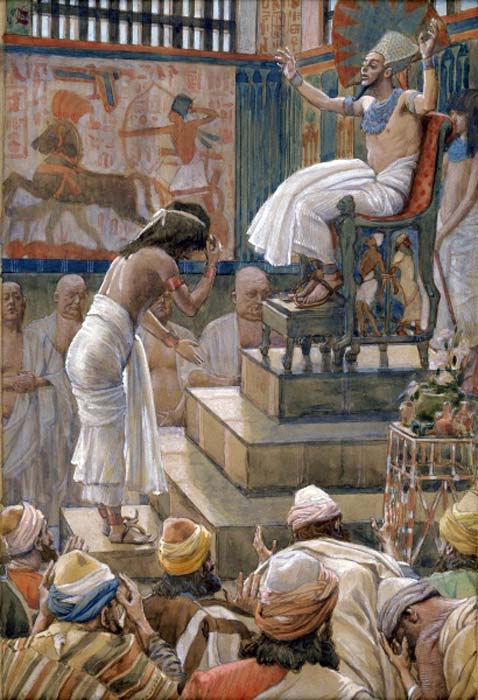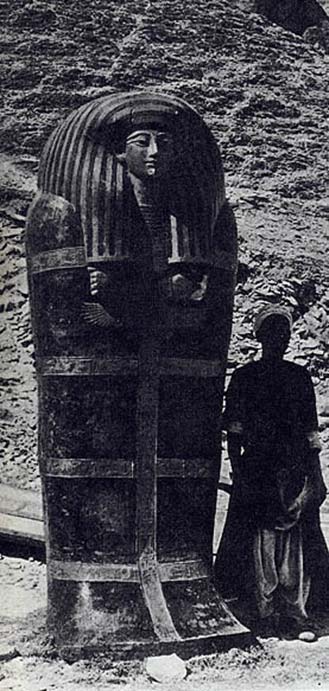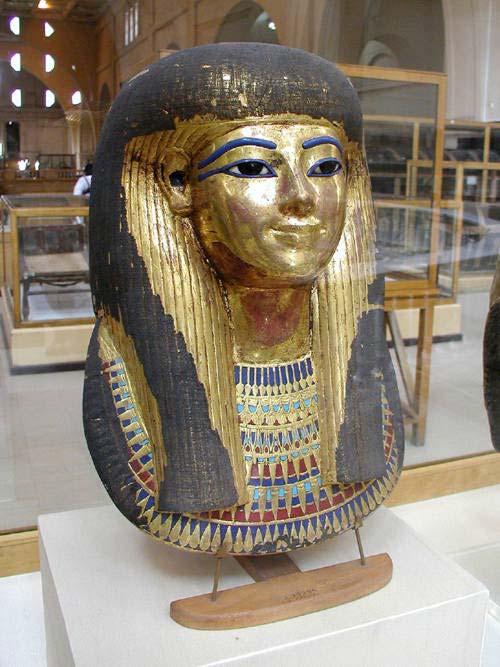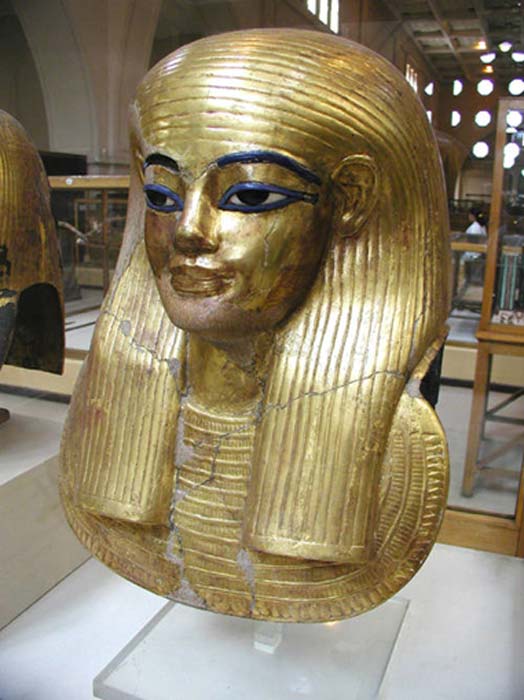
A Mysterious Mummy in Cairo: The Surprising True Identity of Joseph with the Coat of Many Colors
Who was the king who appointed Joseph, of the legendary coat of many colors, as his minister? And during which period of Egyptian history did he live?
Since the start of archaeological digging in Egypt more than a hundred and fifty years ago, scholars have been trying to answer these questions. These were questions to which I devoted twenty-five years of my own adult life.
Patriarch Joseph is said in the Bible and the Quran, to have been sold as a slave into Egypt. It was his own brothers who handed him over to a trade caravan, as they became jealous when Jacob, their father, gave him a coat with many colors. An Egyptian official bought the young Hebrew boy and made him overseer over his house, but when the official’s mistress falsely accused Joseph of trying to seduce her, he was sent to prison. Two years later, Joseph was set free by the Pharaoh, who also appointed him as one of his ministers, when he was able to interpret the king’s dream.

Painting depicting a scene in the Biblical myth of Joseph and the Coat of Many Colors. (Public Domain)
Father to Pharaoh
Later, as a result of a famine in the land of Canaan, the story goes that Joseph’s brothers went down to Egypt to buy corn there. Joseph recognized Jacob’s sons when they arrived, but they did not recognize him in his Egyptian costume; he kept his identity secret.
The famine in Canaan persisted, however, and caused Joseph’s half-brothers to return to Egypt on a second corn-buying mission. On this occasion Joseph invited them to have a meal in his house and, in an emotional moment, he revealed his identity to his brothers. They were ashamed of what they had done to him, when they sold him as a slave, but he asked them not to feel any sense of guilt: “For God did send me before you to preserve life, and He has made me a Father to Pharaoh,” he said.
“Father to Pharaoh”! It was this title that attracted my attention. Egyptian officials were usually given the title “Son of Pharaoh,” but “Father to Pharaoh” was a rare title, and only few people had it. Immediately the name of Yuya came to my mind.
Yuya served as a minister and commander of the military Chariots for Amenhotep III (circa 1405-1367 BC) of the 18th dynasty. Among his many titles, Yuya bore one that was unique to him , it ntr n nb tawi , ‘the holy father of the Lord of the Two Lands’, Pharaoh’s formal title. The reason for Yuya to get this unique title was the fact that the king Amenhotep III had married Yuya’s daughter, Tiye, and made her his great wife, the Queen of Egypt.
- The Magnificent Tomb and Treasures of Forgotten Couple Yuya and Tuya
- Tiye: One of the Most Influential Women of Ancient Egypt

Joseph and His Brethren Welcomed by Pharaoh. By James Tissot, circa 1903. (Public Domain)
Could Joseph the Patriarch and Yuya be one and the same person?
Yuya’s Tomb
The tomb of Yuya and his wife Tuya was found in 1905, three years after Theodore M. Davis had obtained a concession to excavate in the Valley of the Kings. The site of the tomb, the only one in Egypt to be found almost intact before the discovery of Tutankhamun’s seventeen years later, occasioned some surprise.

Outer coffin of Yuya’s mummy. Excavation assistant beside 2.75-meter (9 feet) outer coffin, shortly after excavation, circa 1905. (Public Domain)

An elaborate box from Yuya and Tjuyu's tomb bearing Amenhotep III's cartouche. (CC BY-SA 2.0)
Davis provided the money, while the actual work was carried out by British archaeologists. There is a narrow side valley in the Valley of the Kings, about half a mile long, leading up to the mountain. Eight days before Christmas of 1904, James Quibell started the examination of this side valley. A month later, he decided to transfer the men back to the mouth of the side valley, and by February 1 they had exposed the top of a sealed door that blocked the stairwell. Within a few days Davis and his group were able to enter the tomb, in which they found the sarcophagus of Yuya and of his wife, Tuya (or Tjuyu, Thuya), including their mummies.
- New Research Shows that Some Ancient Egyptians Were Naturally Fair-Haired
- Daughter of Disaster: Unsung Ankhesenamun

The mummies of Yuya (left), and to the right, Tuya. (Creative Commons Fair Use)
Although both Yuya and his wife were known from Egyptian texts, neither was considered particularly important. Nor, as far as anyone was aware, did either of them possess royal blood—which one would expect when they enjoyed the privilege of burial in the Valley of the Kings.

Gilded cartonnage mummy mask of Tuya, wife of Yuya and mother of Queen Tiye. (Public Domain)
Yuya a Semite
Other than sharing the unique title of “Father to Pharaoh,” both Joseph and Yuya were of foreign origin, and many scholars have commented on Yuya’s foreign appearance. Arthur Weigall, one of the archaeologists involved in the discovery of Yuya’s tomb, wrote: “He was a person of commanding presence . . . He has the face of an ecclesiastic, and there is something about his mouth that reminds one of the late Pope, Leo III.” Henri Naville, the Swiss Egyptologist, took the view that Yuya’s “very aquiline face might be Semitic.”
The difficulties scribes had with his name also point to Yuya’s foreign origin. Eleven different spellings were found on his sarcophagus, three coffins and other funerary furniture. Egyptian names usually indicated the name of the god under whose protection a person was placed: ‘Ra-mos’, ‘Ptah-hotep’, ‘Tutankh-amun’, and so on. It therefore seems that Egyptian scribes must have named him after his own god, Yhwh (Jehovah), and that is what the scribes were trying to write, with spellings that included Ya-a, Yi-ya and Yu-yi.
The way Yuya was buried also points to his not having been Egyptian. His ears were not pierced, unlike those of most royal mummies of the 18th Dynasty, the time when Yuya saw service under both Tuthmosis IV and his son, Amenhotep III, and the position of his hands, facing his neck under the chin, is different from the usual Osiris form in which the dead man’s hands are crossed over his chest.

The gilded cartonnage mask of Yuya, the father of Queen Tiye. Was Yuya more than just the father-in-law of pharaoh Amenhotep III – could he have been the Biblical Patriarch Joseph? (Public Domain)
Grafton Elliot Smith, the British anatomist who examined Yuya’s mummy in 1905, raised the question of his non-Egyptian appearance. Smith wrote in his report:
“His (Yuya’s) face is relatively short and elliptical . . . His nose is prominent, aquiline and high-bridged; . . . The lips appear to be somewhat full. The jaw is moderately square . . . When we come to enquire into the racial character of the body of Yuya, there is very little we can definitely seize on as a clear indication of his origin and affinities . . . The form of the face (and especially the nose) is such as we find more commonly in Europe than in Egypt.”
Pharaoh also gave Joseph an Egyptian wife and an Egyptian name, the first element of which is “sef.” Manetho, an Egyptian historian who wrote the history of his country to Ptolemy I during the third century BC, mentions that Amenhotep III had a minister called Sef. It seems that the name “Jo-sef” or “Yo-sef” in Hebrew and “Yu-sef” in Arabic, was composed of two elements: one Hebrew, “Yu,” which is short for Yahweh, and the other Egyptian, “sef.”
In the biblical account of Joseph the Patriarch, on his appointment as minister, he received three objects from Pharaoh as insignia of office, a ring, a gold chain, and a chariot. These three objects were also found in Yuya’s tomb.
Although the royal ring was not found in Yuya’s tomb, written text was found to show that Yuya was bearer of the king’s ring. This is clear from Yuya’s titles, “bearer of the seal of the king of Lower Egypt” as well as “bearer of the ring of the king of Lower Egypt.” A significant find in the tomb also was a gold chain that had fallen inside Yuya’s coffin, and come to rest beneath his head when the tomb robbers cut the thread that held it in place. A small chariot was also discovered in the tomb.
Age of Wisdom
Of Joseph’s death and burial, the Book of Genesis says that he died at the age of a hundred and ten: “They embalmed him and put him in a coffin in Egypt.” Since as long ago as 1865, when the British scholar Charles W. Goodwin suggested the age the biblical narrator assigned to Joseph at the time of his death was a reflection of the Egyptian tradition, this idea has become increasingly accepted by Egyptologists.
Sir Grafton Elliott Smith, the anatomist who examined Yuya’s mummy after its discovery, said in his medical report that Yuya was not less than sixty at the time of his death. Smith was unable by facial appearance alone to judge the exact age, but Henri Naville, who translated Yuya’s copy of The Book of the Dead , wrote in his subsequent commentary on it that “. . . the artist wished to indicate that Iouiya (Yuya) was a very old man when he died: therefore, he made him quite a white wig . . .”
Such apparent discrepancies about age are easily resolved. As the average age to which people lived at the time was about thirty-five, ancient Egyptians considered old age to be a sign of wisdom, and those who attained long life were looked upon as holy figures. Both Joseph and Yuya were considered wise by Pharaoh.
Of Joseph he said: “There is nobody as discreet and wise as you.” Yuya is described on his funerary papyrus as “the only wise who loves his god.” The age Egyptians ascribed to those who lived to be wise was one hundred and ten, irrespective of how old they actually were. Amenhotep son of Habu, an Egyptian magician in Yuya’s time, was said to have lived one hundred and ten years, although the last information we have about him puts his age at eighty.
The City with Many Gates
It is not only a comparison between the Old Testament account of Joseph the Patriarch and Egyptian historical records that point to both being one and the same person. According to the Quran, the sacred Muslim book, before their second visit to Egypt, Joseph’s half-brothers were given some advice by Jacob, their father:
“O, my sons! Enter (the city) not all by one gate: enter ye by different gates…”
This advice indicates that the city they visited on their trade missions, which had many gates, was either Memphis, the seat of the royal residence south of the Giza Pyramids, or Thebes, on the east bank of the Nile.

Egypt - Temple of Seti, east entrance, Thebes. (Public Domain)
The same story is found in Jewish traditions: “His brothers, fearing the evil eye, entered the city at ten different gates” (Midrash Bereshith Rabbah 89). As Jacob is said to have voiced his concern before his sons set off on their second mission it is reasonable to assume that he heard about the nature of Thebes on their return from their first visit. Thebes was known throughout the ancient world as “the city with many gates,” and the Greek poet Homer mentioned it around the eighth century BC as “the hundred-gated city.” These were not references to gates through a profusion of walls, but to entrances belonging to its many temples and palaces.
The Time of Yuya and Joseph
As the name of Pharaoh who appointed Joseph as his minister is missing in the holy books, scholars looked for some other details in the story of Joseph, to help them in fixing his time. They noticed that the “chariots,” were mentioned three times in the Book of Genesis:
1 – When he was appointed as a minister, Pharaoh gave Joseph a chariot,
2 – Joseph used a chariot to go out to welcome his father Jacob and the rest of the tribe of Israel when they arrived in Egypt,
3 – When the Israelites went to bury their father Jacob in Canaan, Joseph took with him “both chariots and horsemen.”
The Bible story of Joseph’s elevation to high office states that Pharaoh provided him with a second chariot to ride in. This suggests his responsibility for the Chariotry, a view supported by the fact that a chariot was found in Yuya’s tomb. It was the custom in ancient Egypt to place in a tomb objects that had a special significance in the life of a dead person.
Early Egyptologists, however, were deceived when they attempted to fix Joseph’s time in the light of this information. For up to a decade or two ago, it was thought that the Hyksos kings who ruled Egypt for about a century and half before the 18th dynasty kicked them out, were the first to introduce the chariot into Egypt. As the Hyksos were themselves of Canaanite origin, it was easy to place Joseph the Hebrew during the period of their rule in Egypt. However, all Hyksos sites at the eastern Nile Delta have now been excavated, and no remains of chariots have been found in any of them; neither any written nor drawn reference to chariots. It is now generally accepted that the Egyptian kings of the 18th dynasty were the first to introduce the chariot.

Ancient Egyptian chariots. (Public Domain)
On the other hand, it has also been established that it was only in the later 18th Dynasty, the time when Yuya lived, that Chariotry became separated from the infantry as a military arm, and that Yuya, as chief minister to Amenhotep III, was the first person we know of to bear the titles Deputy of His Majesty in the Chariotry.
Thus, the similarity between Yuya of the Egyptian 18th Dynasty and Joseph of the Bible, indicates that both characters must have represented one person.
Top image: Golden sarcophagus from the ancient Egyptian Yuya and Tuya collection. (Flickr/CC BY-NC-SA 2.0)
By Ahmed Osman
Updated on January 21, 2021.
















Comments
This a topic that has fascinated me since my youth. There are a great many others that are much more qualified to pontificate and can cite specific proof for their conclusions than I can. Yet in the many decades I have studied this topic certain anomallies sort of stick out to me. Candidly that which I offer are sort of questions rather than conclusions.
I often wonder why, like Alice in Wonderland, investigators into the mysteries of Joseph and the Pharohs leading up to the Exodus don't seem to be at least 'considering' alternative explanations.
I guess the 'root' fact that perplexed me since childhood began with this verse in the text. Exodus 1:8
5And all the souls that came out of the loins of Jacob were seventy souls: for Joseph was in Egypt already. 6And Joseph died, and all his brethren, and all that generation. 7And the children of Israel were fruitful, and increased abundantly, and multiplied, and waxed exceeding mighty; and the land was filled with them. 8Now there arose up a new king over Egypt, which knew not Joseph. 9And he said unto his people, Behold, the people of the children of Israel are more and mightier than we: 10Come on, let us deal wisely with them; lest they multiply, and it come to pass, that, when there falleth out any war, they join also unto our enemies, and fight against us, and so get them up out of the land. 11Therefore they did set over them taskmasters to afflict them with their burdens. And they built for Pharaoh treasure cities, Pithom and Raamses.
In my youth a great many decades ago the term 'know or knew' facinated me in my early studies as the Hebrew 'Yada' [know/knew] can have several quite different meaning.
The Hebrew root is ידע yāda`, which covers a semantic field similar to that of English to know. It is often slightly more ingressive (get to know; perceive), as in Isaiah 6:9 ("keep on seeing, but do not perceive"), even to understand ("Then Manoah knew that he was the angel of the LORD", Jdg. 13:21).
With people it can be simple acquintance (Gen. 29:5) as well as a euphemism for sexual intercourse, both from the man's point of view (Gen. 4:17; 1 Sam. 1:19; ...) and from the woman's point of view (Gen. 19:8; Jdg. 11:39; ...).
To use a verb like to know as a euphemism for sexual intercourse is somewhat common cross-linguistically and must therefore not surprise us; it occurs in other languages related to Hebrew (Arabic, Syriac, Ethiopian) but also in Greek and French (although this may be a result of literal bible translations introducing the idiom into the language).
Now to my point or question. As one studies related topics about Joseph and his connection to the Pharaohs. Verse 45 says, “Pharaoh . . . gave [Joseph] Asenath daughter of Potiphera, priest of On, to be his wife.” Through Asenath, Joseph had two sons, Manasseh and Ephraim, who became the ancestors of two tribes in Israel.
Then when Joseph finally reveals himself to his brother in Genesis 45, he explains in verse 8:
"So then, it was not you who sent me here, but God. He made me father to Pharaoh, lord of his entire household and ruler of all Egypt."
From childhood, but not as an expert of course, whenever I read and now search and find very diverse explanations...well let's say my skeptical radar goes on alert. Please note I am not stating that any of these other explanatons are wrong only that they are so different one to the other someone is wrong and I am not the one to decide.
So in my brain I can't escape the statement of Joseph that he is the father of the Pharaoh and later that a new Pharaoh comes to the throne that “KNEW” not Joseph there is a 'chance' a 'possiblity' the two statements are connected. One can either believe that Ramses, the Pharaoh was so incredibly stupid he didn't know who Joseph was and he had no advisors that could tell him “OR” he was the first Pharaoh in Dynasty 18 that was not genetically related to Joseph.
To be fair virtually nothing I read concludes that Egyptian Pharaoh Tutankhamun's ancestor was Joseph. Incidentally we just learned that King Tut belonged to a genetic profile group, known as haplogroup R1b1a2, to which more than 50 percent of all men in Western Europe belong, indicating that they share a common ancestor. Also a very significant predominance of male European Monarchs are also haplogroup R1b1a2.
Without any real expertise and virtually no competence writing about this topic I humbly accept I have very little right to propose this conclusion. I can't even offer a 'solid speculation' as to why or how or when or which Pharaoh might have been the genetic offspring of Joseph.
However the Hebrew word yāda` [knew] allows for the off-chance that better experts than I might want to consider it. When I read the recent DNA studies of Tutankhamun it at very least should raise eyebrows because less than 1% of Egyptians test for R1b1a2.
I might also mention that I have followed this loose thread off the Wool sweater down many blind alleys. But I have also uncovered numerous other references that may well suggest this is true or a possiblity.
Also, nobody gets paid to tell a LIE, instead, they do it VOLUNTARILY as it is used as a “Catharsis” to relieve them of their inferiority stresses...lol
Charles Bowles
Very true in that neither mummies resemble Yuya and Tuya funerary life image masks, but instead look like some FAKE imposter skeletons without an identity that resembles no real people from that time period of ancient Egypt .. What I view are their original FUNERARY MASKS which are distinctly different from each other, while at the same time resemble the faces of ancient Black Africans with their own unique phenotype since all Black Race people do not resemble each other. I specifically refer to the “TOP LIPS”of both funerary masks which were designed/molded in their images while alive, and DIFFERENT from the general white European human population that personifies the image of having VERY RAZOR THIN UPPER LIPS, Both Yuya and Tuya shows the very thick TOP LIP phenotype. Also, Aryans does not refer to white people, but instead, it refers to WEST Asian people who are a different race from European white race people. It appears that white Eurocentric people are trying to claim Black Asian and African people as being a part of their race… It must suck to be white, while not even being a part of the Black Minoan Greek founders of the first European civilizations..
Charles Bowles
Neither mummies Yuya nor Tuya look like a Semite, especially with their fine hair, but instead, probably Atlantean era (pre-calamity – Atlantis event) victims. So I’d question the dating and of course any attempt to associate/tie in well-known relics with biblical myths/legends. Way too hollywood there.
Nobody gets paid to tell the truth.
Joseph's “tomb” in Shechem is empty.
Pages